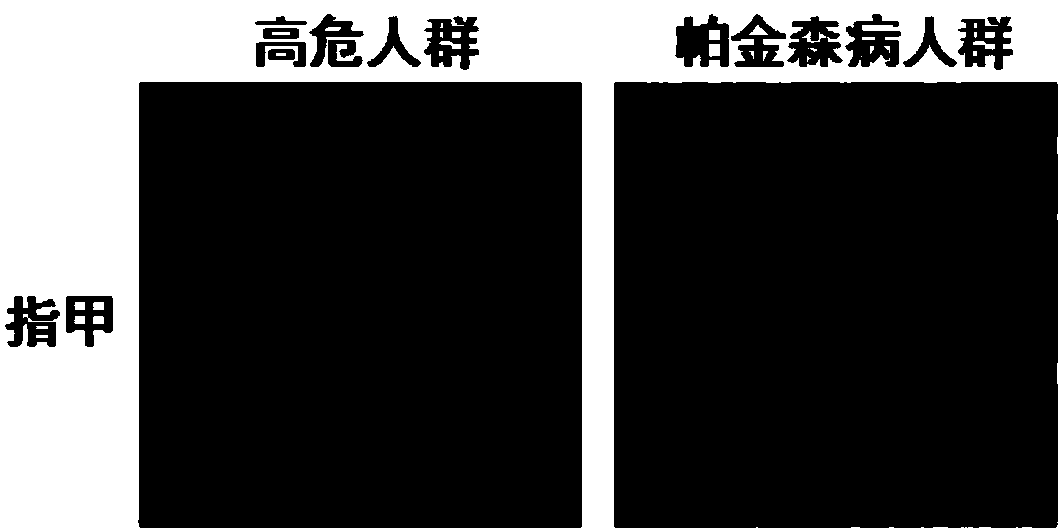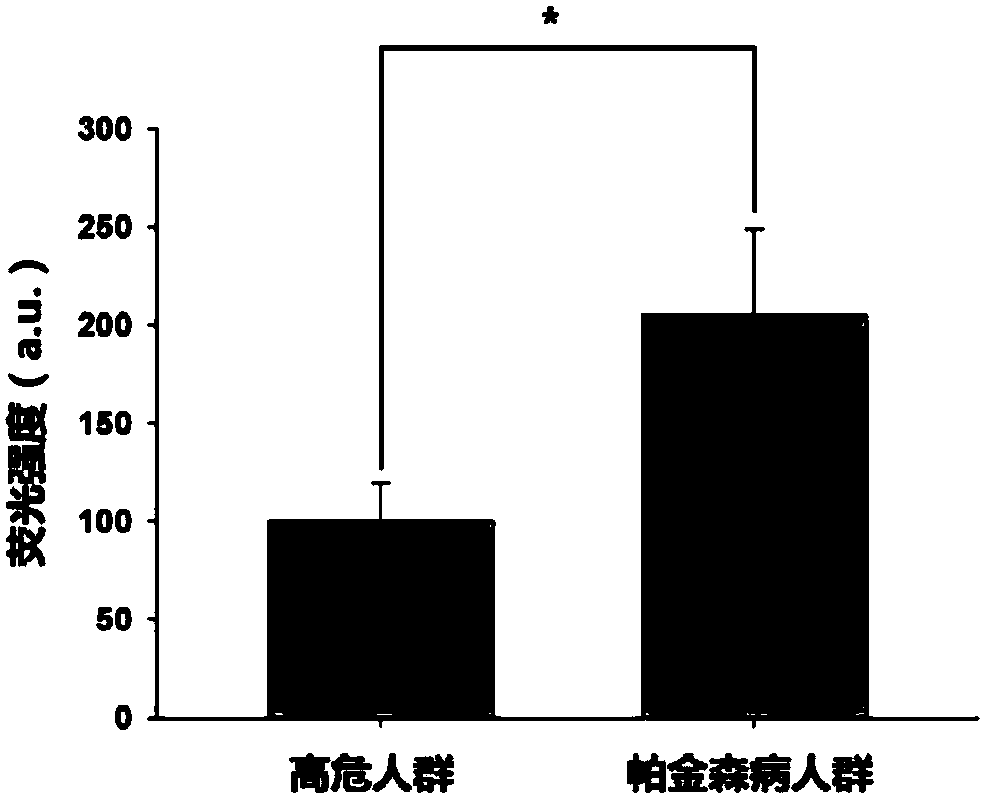Method for judging occurrence of Parkinson's diseases based on spontaneous fluorescence on fingernails and application thereof
A Parkinson's disease, autofluorescence technology, applied in the analysis, application, diagnosis and other directions using fluorescence emission, can solve the inconvenience of patients, non-invasive, fast and economical method for patients with Parkinson's disease, no non-invasive Parkinson's disease Methods of getting sick, etc.
- Summary
- Abstract
- Description
- Claims
- Application Information
AI Technical Summary
Problems solved by technology
Method used
Image
Examples
Embodiment 1
[0029] Example 1: The excitation light is blue light band, the relationship between nail autofluorescence intensity and Parkinson's disease.
[0030] According to the present invention, for the nails of Parkinson's disease or high-risk groups, an instrument is used to perform real-time non-invasive imaging of nail autofluorescence. The experimental results show that compared with the autofluorescence intensity of each nail position in high-risk groups, the autofluorescence intensity of the corresponding positions of Parkinson's disease patients is significantly increased. ( figure 1 and figure 2 )
Embodiment 2
[0031] Example 2: The excitation light is in the blue light band, and the relationship between the difference in autofluorescence intensity at the left and right symmetrical positions of the subject's nails and Parkinson's disease.
[0032] According to the present invention, for Parkinson's disease or high-risk groups, the instrument is used to perform real-time non-invasive imaging of nail autofluorescence at symmetrical positions on the left and right sides. The experimental results show that the autofluorescence intensity of nails in high-risk groups is symmetrical, while the autofluorescence intensity of Parkinson's disease patients is asymmetrical. ( image 3 )
Embodiment 3
[0033] Example 3: The excitation light is in the blue light band, autofluorescence in various parts of the nail, and comparison between Parkinson's disease and cerebral apoplexy.
[0034] According to the present invention, for patients with Parkinson's disease or cerebral apoplexy, an instrument is used to perform real-time non-invasive imaging of nail autofluorescence. The experimental results showed that compared with the stroke population, the autofluorescence intensity of Parkinson's disease patients was significantly higher. However, the intensity difference between left and right symmetrical positions of autofluorescence is significantly reduced.
[0035] Based on the technology of the present invention, it will be applied (including but not limited to): 1. Parkinson's disease screening in population checkup. 2. Self-screening for Parkinson's disease at home. 3. Used in the diagnosis of Parkinson's disease in hospitals at all levels (including community hospitals and ...
PUM
 Login to View More
Login to View More Abstract
Description
Claims
Application Information
 Login to View More
Login to View More - R&D
- Intellectual Property
- Life Sciences
- Materials
- Tech Scout
- Unparalleled Data Quality
- Higher Quality Content
- 60% Fewer Hallucinations
Browse by: Latest US Patents, China's latest patents, Technical Efficacy Thesaurus, Application Domain, Technology Topic, Popular Technical Reports.
© 2025 PatSnap. All rights reserved.Legal|Privacy policy|Modern Slavery Act Transparency Statement|Sitemap|About US| Contact US: help@patsnap.com



